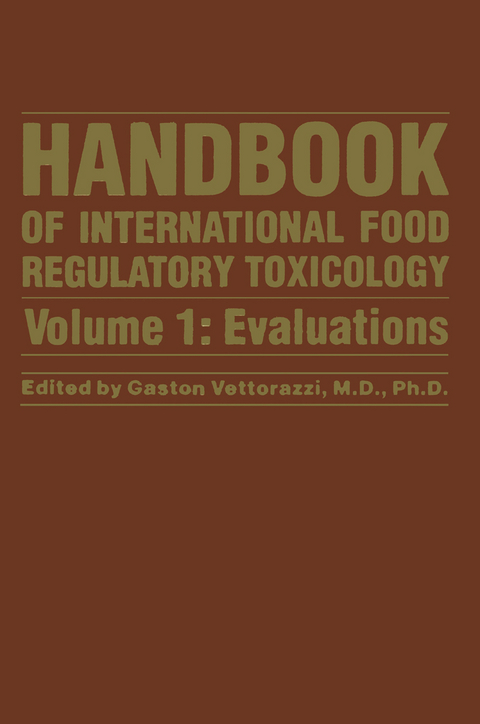
Evaluations
Springer (Verlag)
978-94-011-7273-8 (ISBN)
1. General Principles in the Toxicological Evaluation of Food Additives.- Principles Governing the Use of Food Additives.- Considerations on the Physical and Chemical Identification of Food Additives.- Considerations on Toxicological Testing Procedures.- Considerations on Principles of Interpretation of Experimental Findings.- The Process of Evaluation and Toxicological Decisions.- Sources and Nature of Toxicological Information.- Some Effects of Food Additives.- References.- 2. General Principles in the Toxicological Evaluation of Pesticide Residues in Food.- Considerations on the Physical and Chemical Identification of Pesticide Chemicals.- Considerations on Toxicological Testing Procedures.- Considerations on Principles of Interpretation of Experimental Findings.- The Process of Evaluation and Toxicological Decisions.- Sources and Nature of Pesticide Information.- Use of the ADI Figures.- Internationally Recommended Maximum Residue Limits for Pesticides.- Criteria for Toxicological Evaluation of Some Representative Classes of Pesticide Chemicals.- References.
| Reihe/Serie | Handbook of International Food Regulatory Toxicology ; 1 |
|---|---|
| Zusatzinfo | 161 p. |
| Verlagsort | Dordrecht |
| Sprache | englisch |
| Maße | 152 x 229 mm |
| Themenwelt | Medizin / Pharmazie ► Medizinische Fachgebiete ► Pharmakologie / Pharmakotherapie |
| Medizin / Pharmazie ► Pharmazie | |
| ISBN-10 | 94-011-7273-0 / 9401172730 |
| ISBN-13 | 978-94-011-7273-8 / 9789401172738 |
| Zustand | Neuware |
| Haben Sie eine Frage zum Produkt? |
aus dem Bereich


